
In the years we’ve gardened we’ve killed our share of plants. I’d like to think we’ve learned from our errors. To that end, I thought I’d run down some of the big mistakes we’ve made.
1. The right plant in the right place Our front yard is a hillside. Our backyard has two tall trees that cast shade towards the north. The soil varies in color, texture and quality largely due to almost a hundred years of construction projects (decks, foundation work terracing, etc.). The same plant that might thrive in one spot will wither in another. This is where trial and error comes in. Sometimes the only way to find out if what will grow is to plant stuff and see what takes off.
2. Soil compaction This is a big problem in urban areas and our yard is no exception. The parkway, which gets a lot of foot traffic, is very compacted. Very few plants do well with compacted soil, including natives. The best way to break up compacted soil is with a broadfork, a spendy item. We use a garden fork instead.
3. Soil fertility When it comes to growing vegetables, in particular, you need rich soil. Get a soil test first. But soil fertility is a lot more than chemistry–it’s about life. Healthy soils have a rich and diverse microbial and fungal ecosystem. You can jump start that fertility with compost. But somehow we never have enough compost.
4. Bad nursery stock. I’ve bought my share of root bound plants and plants that came with diseases. The worst example I’ve seen is a nursery selling grape vines that all had incurable Pierce’s disease. That’s a guaranteed failure. Thankfully we’ve found a few good sources when we need seedlings: Annie’s Annuals and Perennials and Theodore Payne.
5. The great mystery of watering. I’m still working on this one. I discovered last year that I’ve been under-watering our fruit trees. To figure out watering needs for fruit trees the pros use expensive soil augurs to take samples. I may break down and get one but in the meantime I’ve got a high quality moisture sensor I’m experimenting with on the suggestion of fruit tree guru Steve Hofvendahl (thanks Steve!). More on this topic in another post. I’ve also been known to neglect and/or over-water our vegetables as well.
6. Timing. It took us a few seasons to realize that our Mediterranean climate is very different from what the back of seed packages were telling us in terms of when to plant. I’m sure climates that have hard freezes have a whole other level of surprises and heartbreak.
Acceptance
You’re going to kill plants. Just as you have to break an egg to make an omelette, the only way you’re going to learn about your garden, its soil, microrclimates and quirks is by killing plants.
I’m sure I’ve left some things out. Let us know in the comments how you have killed plants.

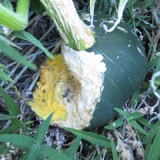
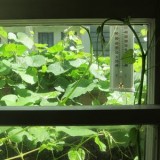
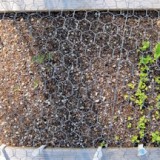
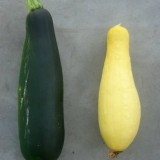
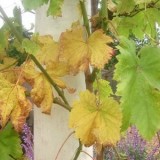
Forgetting to harden off seedlings has killed off more of my plants than I like to admit!
I know that feeling. My 10 year old son had a couple watermelon growing in a sunny window and they were looking great. I decided it was time to take them outside to reach for the sky. Well, those two plants died of sun burn/stroke within two days. From beautiful to dreadful in less than 72 hours.
Is that Dittany of Crete in the lead photo? If so, I recently killed mine as well. I have a knack for over-watering the plants that need to be under-watered and vice versa. I’m getting better, but there are still a few casualties.
It is Dittany of Crete. I still have hope for this little plant. It did well for a few years in a pot in the front our our house. I’m hoping that it will recover.
That Dittany was always fussy– it sorta grew but never thrived in its pot, never looked great, you know? So I booted it out of its pot (precious real estate) and replaced it with something which is doing much better. Then I proceeded to kill it, first by roughly transplanting it into a small plastic pot, and then by failing to water that pot adequately. oops. Finally I got around to planting it in a better pot, but the damage is done. Erik is optimistic to think it will come back. But you never know…
I’ve killed plants with the sun, mainly. Either under-sunning or over-sunning. I’ve moved one hosta all around the yard in hopes of finding enough shade–this variety is supposed to be sun tolerant (4 hours a day) but that appears not to be the truth. It was happiest when covered in honeysuckle vines (we forgot about it and while weeding, found it looking beautiful. Now it’s trying to die again since its shade is gone). I’ve had weeny corn because of spots that aren’t sunny enough.
* Not had luck with clay pots on cement surfaces in full/mostly sun here in inland socal. Just when I think we’re all dandy, a few sudden days of over 100 and everyone is fried beyond hope. doing much better having plants either in cooler type pots (eg wooden barrels), pots but on/halfway into the dirt, and pots with ollas in them.
* “full sun” plants aren’t necessarily “full sun” in hot inland areas. see above 😉
* lack of mulch
* moving into a new house and not waiting a full year before planting things to get a feel for how the 4 seasons *really* affect the different zones around the house – not just with water drainage, but seasonal wind patterns, and exactly where the sun hits winter v. summer. I’ve found that by having some patience to get to know the existing terrain, I’ve made much better decisions about what will work where.
* not me – but a neighbor moving in who changed their landscaping, added more watering in different places, and thus killed off the native oak in my yard near the fenceline. Just because a plant is technically in your yard, you have to have good communication with your neighhbors/agreements on how they will be cared for (who will trim/maintain on their side etc.)
I have a pretty extensive knowledge of plants, from studying them in graduate school, and in jobs, and as a gardener, and I have managed to kill a shameful amount of plants in my landscape. I have a good handle on compaction, soil fertility, and moisture, and I work hard to amend our awful soil. Most of the losses have been fussy ornamentals like Japanese maples, but some have been natives, like dogwood, and serviceberry. My most successful and longest lived japanese maple, a paperbark maple about 15 yrs old, died one year and my best guess is the salt I put on the sidewalk during winter. I do my best to troubleshoot when a loss occurs, and I have also realized that as I am out of town, the exposure to the elements is much more severe and may account for some losses I can’t explain. There are also bug problems (borers on a white birch, bagworms on junipers), but sometimes I just can’t account for why one cherry tree survived and one just 5 feet away didn’t.
A more apt analogy would be sometimes eggs just roll off the counter. Not at your house? Okay, that is what happens at my house.
My ex would over water a plant I was caring for just fine. Then, when it looked worse, he yelled at me and told me I was killing it by not watering it enough and watered it again, sometimes three times a day, a good soaking. He just killed everything but told people I let plants die.
The sun in the South kills tomatoes. So, we learn to throw a white sheet over the plant or put up umbrellas for them.
My back yard should not be as windy as it is even on windy days, but the venturi effect with maybe a little Bernoullis principle thrown in leaves me with an area where it is hard for me to stand against the wind some days, much less a plant staying upright. Too much intermittent wind has been the cause of some of my dead plants. Not only does it blow them over or severely dehydrate them, but other things land on the plants. I am not going out in that kind of wind in the backyard to rescue plants.
The main thing is not locating plants where I pass them every day, going and coming from wherever. I have so few and no designated garden area. I suppose everything should be right outside the door.
Have you tried mixing in perlite when you break up your compacted soil? Also mixing in peat may help (yes, I have read about peat, but I think a lot of the problems are in England and don’t apply so much in the states).
This year I switched to a different brand of seed starters and all of my seeds sprouted, then didn’t grow! They just stayed there with their baby leaves for weeks and didn’t so much die as… mummify? It was strange, I’ve never had that problem before.
That happened to me a few months back, too! I had a six pack of flower seeds sprouted, and I waited and waited for them to grow. I don’t know. There are many mysteries.
it seems we had beginner’s luck last year. this year, we amended our clay soil with cow manure from our fields, and some “good” soil and mushroom spent compost we purchased at our favorite feed and seed store about a hundred miles away.
i had healthy seedlings… about two weeks into their beds, they are, for the most part, all dying on us. one bed had some exotic mushrooms coming up in it after a good rain. obviously, the compost wasn’t pasteurized before going to the seed and feed. we had such a good head start. i guess our lesson is: if it’s not broke, don’t fix it. talk about heart broke!
Two words: cat poo.
As an over excited novice veggie gardener with a windy north facing third floor balcony, how have I not killed plants? Under watering; not tying peas to the trellis such that their tendrils break when it gets windy and a whole pea plant falls over and gets shrively; bad luck at seed starting (people tell me a 30% success rate is low but I’ll keep trying until I get better!) Also general neglect.
I have no idea what happened to my poor blueberry, but it was a rescue plant and I’m really not certain it was alive when we brought it home.
Of the planting I’ve done, I haven’t really killed much off. I think I have a pretty good soil to thank for that.
The worst problem I keep encountering is planting something, then changing my mind a few months or the year later – when it’s a bit too late or a pain to move them.
In Los Angeles:
1. Overwatering.
2. Watering too often, which encourages the roots to come too close to the surface, which kills the plant in extreme heat.
3. Planting a potted plant with the crown too deep.
4. Forgetting to water. You just can’t.
5. Planting exotics. Not that you need to stick with ‘the boilerplate ten’, but. . .
6. Not rotecting from guests.
7. Being told, “That’s a weed!” “That’s invasive!” “That’s going to smell bad, you know.” “That right there will have the roots pop your expensive retaining wall and/or block up your sewer pipe.” “Those grow to 60 feet, and as wide.” (This last group would be considered intentional plant killing.)
To end on a positive note, there’s great satisfaction in helping and seeing something grow.
re: ‘weeny corn’. Solution: dig a 1’x1′ hole for each plant and fill it with potting soil. Plant seed. Remember, you’ll probably be growing these for your guests: ants, bugs, birds, squirrels.
To end on a positive note, it’s all about the process, really.
PROTECTING from guests.
There is NEVER enough compost….ever… 🙂 I was just telling someone about that yesterday.
Only six?
I think I’ve got you guys beat.
Not protecting my plants from my blanketdy-blank chickens. I’ve built bunkers fortified with all sorts of wire and stakes for my plants and the feathered monsters manage to treat them like a salad bar.
Welcome to the club–I’ve done that one too. Then there’s the skunks who have taken out several vegetable gardens.
Pingback: The Easy Way to Food Independence
just an update:
it was beginner’s panic.
our garden is flourishing!
🙂
Yay! Congratulations!
Pingback: » Gardening Mistakes: Six Ways We’ve Killed Plants | Root Simple